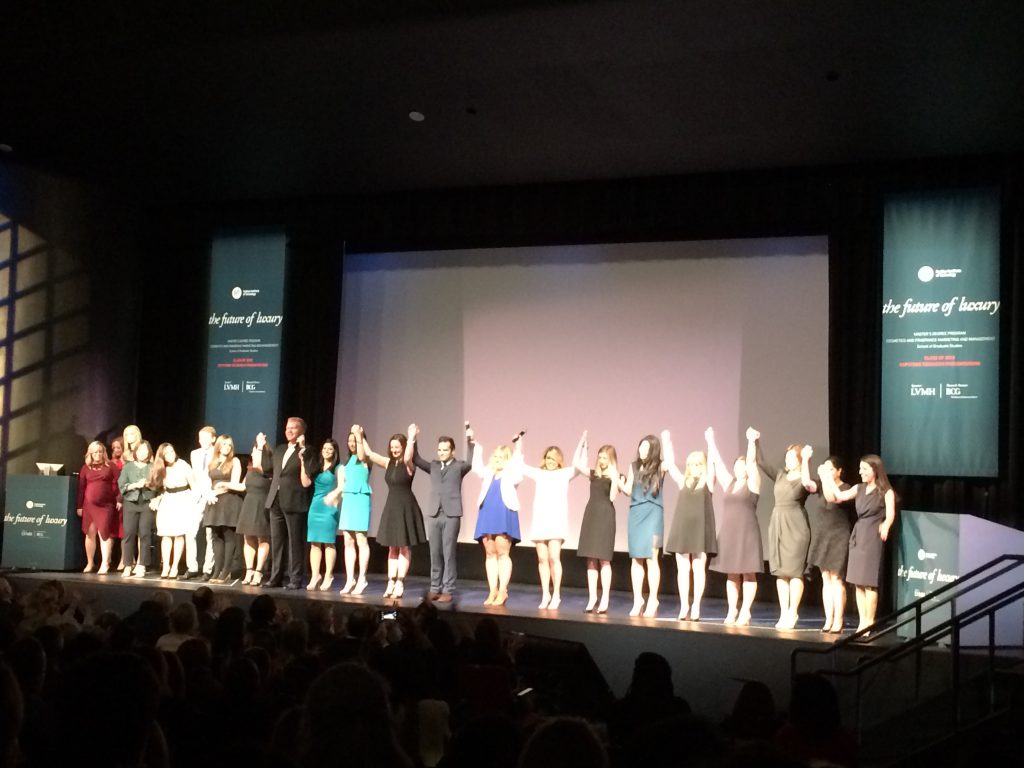As a new analyst at Kline, I was invited to attend The Fashion Institute of Technology’s Cosmetics and Fragrances Marketing and Management Master’s Degree Program—2015 Student Capstone Presentations. The topic this year was “The Future of Luxury,” and I was excited to learn more about the topic from scholars who have been learning and collaborating alongside renowned professors throughout the past few years. The presentations did not disappoint. The knowledge and articulation of each presenter, coupled with interesting anecdotes and attractive graphics playing in the background, made for a captivating experience. The event showcased tremendous talent from top consumer products companies and provided very important insights on the ever-changing luxury industry. Here are three of my key takeaways.
- Invest in consumer research! – One of the most outstanding tidbits of information I walked away with was the knowledge that consumer products companies spend only approximately 3% on consumer research, while companies like Google and Amazon spend approximately 15% and 10%, respectively. This was shocking to me as one of the tenets I took with me when I graduated from business school was the idea that companies should know their consumers’ wants and needs. Without consumers’ demand for a product, there are no sales. In an ever-changing world where an average American sees 500 ads per day and has an endless choice of beauty products, it makes sense for companies to get to know their core consumers and create products that they want. What does this mean for consumer goods companies? The Graduates of 2015 recommend that companies raise their consumer research to 8% in the short term and develop technology that reads consumers’ mood in stores for the long term, thus providing consumers’ individualized solutions to their problems.
- Create a shopping experience! – According to FIT’s research, 72% of millennials would rather spend money on experiences versus products. While e-commerce outpaces brick and mortar by 5 to 1, brick and mortar continues to dominate 75% of luxury retail sales, finds our soon-to-published Beauty Retailing USA: Channel Analysis and Opportunities. This means companies need to stand out from competitors by creating a “brick and mortar shopping experience” to help drive sales through 2030. The Graduates of 2015 recommend that shopping becomes a journey for consumers, and that companies focus on hiring long-term, top talent to develop and nurture relationships with consumers who are looking to create memories and an emotional connection with the luxury brands they purchase.
- Invest in Big Bet Cities – Traditionally, luxury companies group markets together by geographic location. However, the Graduates of 2015 note that there is a rise in consumer spending in emerging markets, and there is a renewed opportunity for luxury brands in mature markets. According to the Graduates of 2015, in order to succeed, companies will need to evaluate each city or market appropriately and invest in restructuring product assortments and retail formats customized for the market. Companies will also need to re-locate the appropriate talent into different city markets. Finally, companies will need to re-allocate resources to optimize efficiency.
As a member of the program’s Industry Advisory Board, Kline is proud of all students and the outcome of the research. Congratulations to all the graduates!
By Kelly Alexandre, Kline’s Consumer Products Analyst

